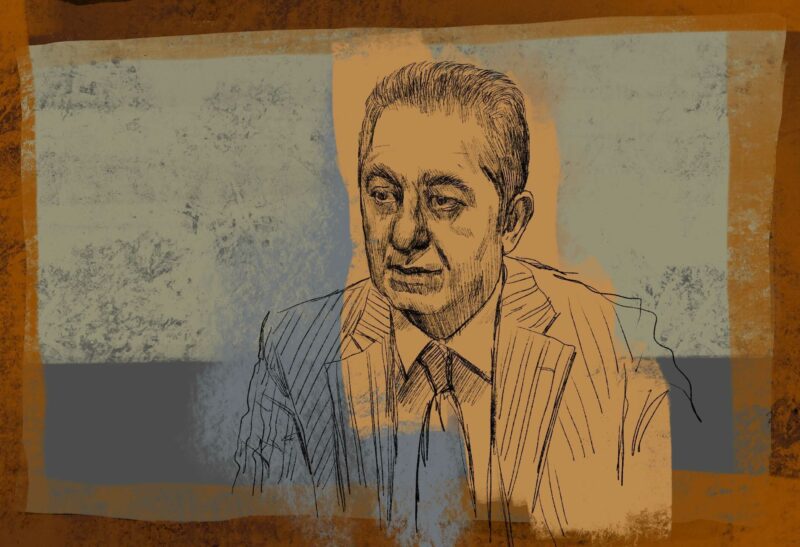Is Azerbaijan on the precipice of change or disaster? With multiple arrests and the state’s increased arbitrariness toward its own citizens, one cannot help but wonder – what led to these developments?
From high-profile trials to the infamous case of relatives “disowning” their family member and deadly fires, the society is left reeling in doubt about the present and future. But to understand this better, one needs to look into the past. The answers to those questions are neither purely internal nor solely external. It is the combustible interplay of politico-historical events with current circumstances.
When I was at home, I bore witness to fascinating discussions expressing great concerns about Azerbaijan turning into a second Syria. Are those fears justified or exaggerated?
Syria’s “Balkanization”?
The war in Syria has entered into its fourth year, with concerns growing over the country’s looming balkanization
At the very beginning, both president Asad’s supporters and the opposition were determined to end this conflict on their terms. But now, after four years of unending bloodletting, millions of refugees, and hundreds of thousands of deaths, competing forces have taken different regions under their control. Diplomats who are closely observing the situation in the country use the term “Balkanization” profusely in their conversations, alluding to the country’s imminent division.
Interestingly enough, this phrase has been recently used by Russian President Vladimir Putin’s former advisor, Andrei Illarionov, who said: “Obama let Putin have control over Ukraine in return for Syria and Iran.”
Critics wonder whether the recent deal with Iran will accelerate Syria’s partition. While many ponder over what historical developments have led to Syria’s gruesome demise, some note uncanny similarities between our historical paths.
Historical paths
First of all, both Azerbaijan and Syria appeared on the world’s political map as a result of the World War I. Since our readers are well aware of Azerbaijan’s history, we will move to Syria right away. Upon the collapse of the Ottoman Empire in 1918, victorious France received a mandate for Syria and Lebanon. To make it easier to control those territories, France divided them into six administrative areas: Damascus, Aleppo, Alawites, Jabal Druze, the autonomous Sanjak of Alexandretta (later it became Hatay, and was added to Turkey’s territory in 1939), and the State of Greater Lebanon.
Later on, the State of Greater Lebanon became just Lebanon, and the rest of the territories united under Syria and gained official independence in 1941. The French, however, retained their influence, and most Syrians were able to speak this language up until recent years, in the same way as the Russian language is used in Azerbaijan.
In the following years, Syria traversed difficult times. In 1963, the Ba’ath Party (Arab Socialist Renaissance Party) was established. Around seven years later, Defense Minister General Hafez Assad came to power and remained in power until 2000.
Once again, the similarities are glaring.
Just like Azerbaijan, some of Syria’s territories remain under occupation. In 1967, the Golan Heights in southwestern Syria were occupied by Israel as a result of the Six Day War between Israel and Arab states. While they managed to reclaim some parts of the lost territories in the 1973 Yom Kippur War and Quneitra through peaceful agreement, the Syrians have not progressed any further than that.
In 1981, when Israel officially announced the annexation of the Golan Heights, the UN Security Council adopted Resolution 497 on December 17, 1981 condemning the annexation, which is not internationally recognized. The United Nations General Assembly once again condemned the annexation in 2008.
Azerbaijan experienced a similar fate. Despite four UN resolutions in Azerbaijan’s favor, the country’s territorial integrity is still violated. But I will not delve into details.
Family in power
General Hafez Assad was of Alawi origins (although the government was secular). Thus he represented the minority of the population, which always feared a massive uprising. This is exactly what happened in the late 1970th. The government ruthlessly suppressed a series of revolts by Sunni Islamists. By some estimates, from 10,000 to 40,000 people perished, and the city of Homs was reduced to rubble during 1972-1982 revolts. At this price, the government achieved its goal of restoring “stability” and used similar tactics later in its modern history.
While Assad was still alive, his elder son Bassel was meant to succeed him. However, the latter lost his life in a car accident in 1994. Therefore, the second choice fell on Bashar who at that time studied abroad in London. Thus, instead of becoming an ophthalmologist and eye surgeon, Bashar Assad entered the military academy in Homs in 1995 and later led the Republican Guard. He received the rank of colonel in 1999. After Hafez Assad’s death, the minimum age for presidency was lowered to 34 to fit Bashar’s age at the time. This is how Bashar Assad inherited the country.
A similar scenario played out in Azerbaijan in October 2003, when Ilham Aliyev succeeded his father Heydar. Heydar Aliyev ruled Azerbaijan from 1993 to 2003.
To be continued…



